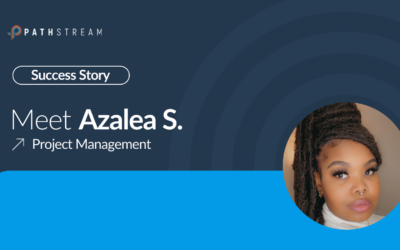Data analysts formulate business-relevant insights based on incoming data to increase the organization’s success. They input, manipulate, and identify trends in datasets to drive process improvements, pricing decisions, website design, mitigate risks, retain customers, and beyond. Data analytics is a promising career choice for recent graduates with room for growth. The U.S. Bureau of Labor Statistics states that data analytics jobs will experience 20% growth through 2028. That, plus the U.S. median salary for a Data Analyst, is $73,843, and a Data Analyst with over 5 years of experience earns over $92,000 on average, making this an extremely attractive field. We’ll detail some tips for how to begin your career below.
1. Consider a stepping-stone job to get your foot in the door.
A “stepping stone” job is a role related to the industry in which you’d like to pursue a career but not a role you’d like to be in for the rest of your professional life. These roles often give you experience with foundational industry concepts. They can make your resume stand out when you apply for future roles. A few examples of stepping-stone jobs related to data analytics are Data Entry Specialist, Data Associate, and Research Analyst roles. With each of these roles, you’ll likely increase your familiarity with spreadsheets and data and maybe even get experience with larger-scale data projects that you can bring up in future interviews. Watch our Career Workshop on navigating a career change to learn more about stepping-stone roles.
2. Know what hiring managers and recruiters in the data analytics field will expect of a candidate.
Browse job postings for roles that interest you to determine which skills are most attractive in the data analytics field. Maybe you don’t have much experience with tools like SQL or Tableau. Still, if they continually appear in job listings that pique your interest, you could look into those topics more. Perhaps you worked with a university program that frequently appears on job postings, in which case you can make a mental note to highlight that when you’re speaking with recruiters. It’s also helpful to review common data analyst interview questions and answers to know what to expect during the interview process.
3. Tailor your LinkedIn profile and resume to data analytics.
Now that you know what it takes to be a real-world Data Analyst update your LinkedIn to reflect what you’ve observed. However, you can showcase your data skills from previous jobs, volunteer work, internships, or school projects on your LinkedIn. You can also feature your resume to show recruiters and hiring managers that you’re serious about a career in data. Update your About section to reflect your interest in the data analytics field and use data-driven to quantitative statements to describe your work experience. You can also pursue acquiring a skills certificate or other skill-building programs that issue digital badges to display on your LinkedIn for recruiters to see.
If your college degree is in a data-related field, contact whom you worked on course projects with and ask them to write you a recommendation to post to your profile. Another way to leverage a data-related college degree is to think back through your data projects and talk about them on your LinkedIn and resume.
For recent college graduates, starting a career can seem scary. But the good news is that the Data Analytics field is growing rapidly, and you have an extremely good chance of being a successful Data Analyst.
Was this helpful?
Thanks! What made it helpful?
How could we improve this post?









